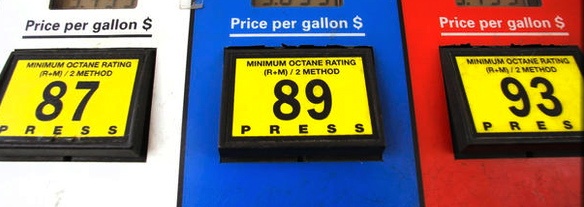Gas prices expected to fall through Christmas as winter fuel demand declines
by November 10, 2015 2:32 pm 184 views

Although gas prices have edged up in recent weeks across Arkansas and the rest of the U.S., the monthly average for a gallon of regular unleaded is expected to decline between Thanksgiving and Christmas as unplanned refinery outages this fall come back online, according to Tuesday’s (Nov. 10) short-term energy forecast by the U.S. Energy Information Administration.
With national pump prices at about $2.21 per gallon this week, the EIA expects monthly gasoline prices to decline to an average of $2.06 a gallon in December. In October, the monthly average price of U.S. regular retail gasoline was $2.29 a gallon, a decrease of 8 cents from September pump prices and 88 cents lower per gallon than a year ago.
According to AAA’s weekly fuel gauge, the national average for gasoline jumped two cents over the past week, but today’s average still represents the lowers prices for this date since 2006.
“Consumers are saving 10 cents per gallon month-over-month and 72 cents per gallon year-over-year,” the AAA said. “The national average has moved lower for 24 of the past 30 days and is down 59 cents per gallon versus the 2015 peak price reached in June ($2.80).”
And although planned refinery maintenance during the fourth quarter of 2015 is not expected to adversely affect the supply of gasoline and distillate when gasoline demands traditionally falls, there were several unexpected hiccups in the Midwest and West Coast markets during the fall turnaround season.
ARKANSAS PUMP PRICES
In Arkansas, pump prices continue to remain in the range of 10 to 20 cents cheaper than the national average continues. On Tuesday, the average price for a gallon of regular unleaded across the state is $2.04, with several areas of the state seeing average prices below the $2 level.
For example, pump prices in the state’s metropolitan areas range from a low of $1.98 per gallon in the Fort Smith area to a high of $2.06 per gallon in Pine Bluff. Motorists on both sides of the Texarkana state line are seeing prices at an average of $1.99 per gallon, and the central Arkansas and Northwest Arkansas markets are posting average pump prices of $2 and $2.04 per gallon, respectively.
Drivers choosing to fill up the tanks with a higher-grade of gasoline should expect to pay an average premium of $2.51 a gallon across the state. Big rig drivers and other diesel fuel users will see pump prices at about $2.32 a gallon, down a whopping $1.23 per gallon from a year ago.
NATIONAL TRENDS, ISSUES
The Midwest is still recovering from the fall turnaround season, but the latest EIA data puts gasoline production and the overall utilization rate at virtually the same levels as prior weeks despite reports of restarts, the AAA said. Also, Chevron’s 240,000 barrel per day refinery complex in Richmond, Calif., is undergoing the largest turnaround work in the refinery’s history and recently reported a major unit shutdown.
“Although gasoline demand typically retreats during the month of November, which could offset any major spikes in price due to supply shortages, unplanned outages could create volatility and put pressure on the national average in the near term,” the AAA said.
Drivers in six states are paying an average below $2 per gallon, and consumers in South Carolina ($1.95) and Alabama ($1.96) continue to pay the lowest prices at the pump. Hawaii ($2.87) is the nation’s most expensive market for retail gasoline, and it is joined by regional neighbors California ($2.84), Nevada ($2.71), Washington ($2.51) and Oregon ($2.40) as the top five most expensive markets.
Following are additional highlights of the EIA’s short-term energy outlook (STEO).
North Sea Brent crude oil prices averaged $48 per gallon in October, a one dollar increase from September. The EIA forecasts that Brent crude oil prices will average $54 per gallon in 2015 and $56 per gallon in 2016. The forecast for West Texas Intermediate (WTI), the U.S. premium grade of light, sweet crude oil, average four dollars lower than the international Brent price in 2015 and $5 cheaper in 2016.
Natural gas working inventories were 3,929 billion cubic feet (Bcf) on Oct.30, which matches the previous weekly record set November 2, 2012. The October 30 level was 10% higher than a year ago and 4% higher than the previous five-year average (2010-14) for that week. EIA expects the Henry Hub natural gas spot price to average $2.59 per million British thermal units (MMBtu) this winter compared with $3.35 per MMBtu a year ago.
Power plant operators have announced the retirement of more than 2,000 megawatts (MW) of nuclear generating capacity by 2020, equal to two percent of current U.S. capacity. These planned retirements are in addition to the five nuclear reactors that have shut down over the past four years, including the Vermont Yankee plant (604 MW) in December 2014. None of these planned retirements is expected to occur before the end of 2016, which is the forecast horizon for the current short-term forecast. Five new reactors are currently under construction and are expected to add more than 5,000 MW of new capacity by 2020.
